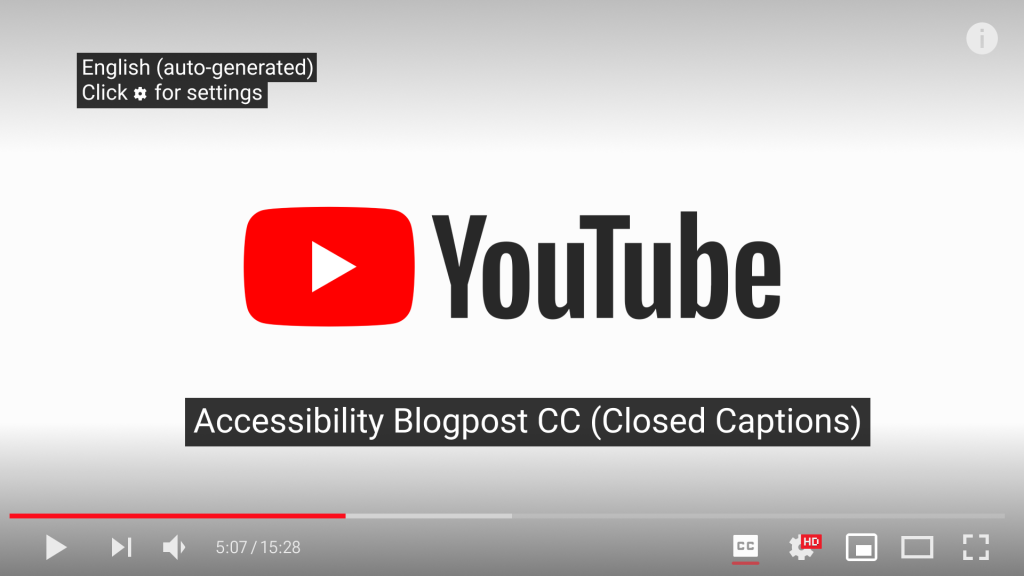Closed captions are more than just words on a screen—they’re the keys to unlocking stories for everyone. These little lines of text create a world where everyone can tune in effortlessly. Bridging language gaps, this assistive technology lets everyone experience video-based media.
What is CC?
According to the NYC Audio Description and Captioning Guide, ‘Captions‘ are the written form of every sound within a video or live performance for Deaf and Hard-of-Hearing Audiences. The term ‘Closed’ indicates that captions won’t be visible by default; they can be turned on and off based on preference. ‘Open captions,’ on the other hand, are readily available and cannot be turned off. Before discussing closed captions further, let me explain the difference between closed captions and subtitles.
“It is not the CC you add in emails but the one you enable to clarify video-based media!”
Subtitles and captions both have different inherent purposes but function similarly, helping viewers understand the video speech. According to Friedman, subtitles are regarded as an internationalization component, not accessibility, whereas captions are designed for accessibility. Subtitles presumably assume that the viewer is unfamiliar with the language or accent. Subtitles enable a significant population of users with or without access to sound who might have vision or cognitive impairments to watch media in foreign languages.
“Subtitles and captions are used for the same purposes worldwide.”
Design & Accessibility
The design and accessibility of closed captions are essential for creating an inclusive viewing experience. Effective captions should use a clear, adjustable font, customizable color options, and consistent positioning to ensure readability. Gareth discusses the editorial accessibility conventions for an accessible caption or subtitle experience. BBC provides an in-depth user-centric guide to considerations, such as color, quotations, hyphens, arrows, and many more, that can be universally applied. Based on location, captioning conventions vary for North America and Europe.
Customization of captions to make them compatible with your visual preference is an additional accessibility feature that expands the utility to make it more inclusive. YouTube allows users to customize everything from font color, size, style, background color, and even window opacity. These adjustments make the experience more desirable, and the viability is sustained and evolves over time. The social model of disability strongly reflects the customization feature that accommodates individual needs, ensuring that media content is accessible and inclusive for everyone.
Impact of CC!!
Closed captions have a profound impact on global media consumption, becoming a default choice for many to enhance video accessibility in noisy or public settings. Whether used out of habit or necessity, they cater to a broad audience. Legislation such as the ADA, the Rehabilitation Act, and the CVAA underpins this trend, promoting the widespread adoption of accessibility features and ensuring that media content remains inclusive for all users.
YouTube asks creators to add captions to make the video accessible to all. The gif below outlines adding captions and subtitles to expand your audience’s reach. Although auto-generated captions increase ROI, they’re usually faulty and must be manually corrected. In addition, YouTube has an alternative guide to editing caption text or timings or getting auto-generated captions.
Although real-time captions with perfect synchronization cater to the social model of disability by giving people with hearing impairments the same media experience, they are not very inclusive because they have certain limitations relating to video with poor sound quality, YouTube’s inability to recognize speech, multiple speakers speaking, or the overlap of multiple languages.
“It’s about time technology caught up and provided subtitles along captions for live streams.”
In the ever-evolving world of digital media, closed captions are more than just text on a screen—they’re a bridge to inclusivity, ensuring no one misses out on the experience. Whether helping someone enjoy a video in a crowded room or empowering audiences with hearing, vision, or cognitive impairments to engage with content, captions unlock a new level of accessibility. As customization tools evolve and technology catches up with real-time demands, we’re not just adding words to videos; we’re crafting a future where everyone can tune in, no matter how they listen.
References
- BBC Accessibility for Products – Subtitle guidelines
- Friedman, Vitaly. 2023. “Designing for Accessibility: Best Practices for Closed Captioning and Subtitles UX.” Smashing Magazine. January 11, 2023. https://www.smashingmagazine.com/2023/01/closed-captions-subtitles-ux/.
- Gareth Ford Williams. 2021. “A Guide to the Visual Language of Closed Captions and Subtitles.” Medium. UX Collective. October 31, 2021. https://uxdesign.cc/a-guide-to-the-visual-language-of-closed-captions-and-subtitles-2fda5fa2a325.
- nyc.gov Audio Description and Caption Guide pdf
- “WebAIM: Captions, Transcripts, and Audio Descriptions.” 2020. Webaim.org. July 1, 2020. https://webaim.org/techniques/captions/.
- YouTube Help – Add captions and subtitles
